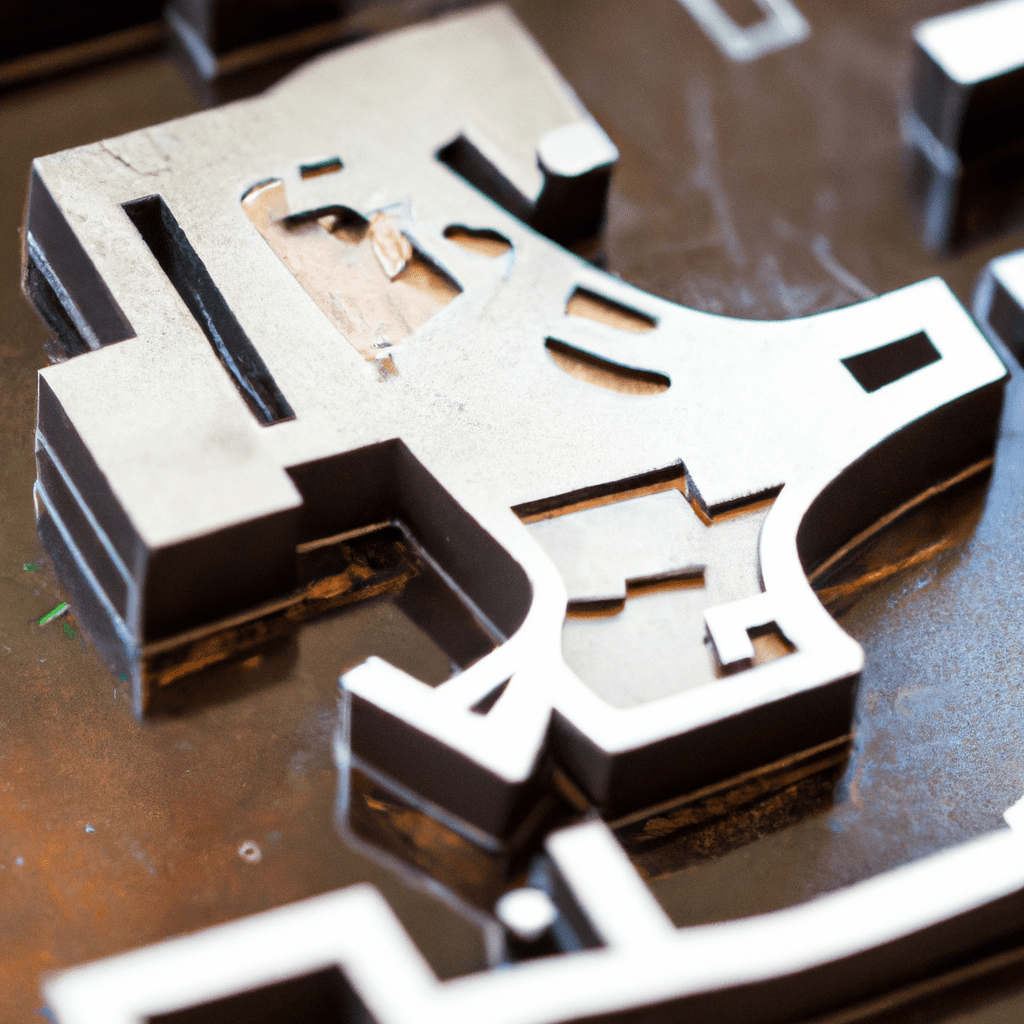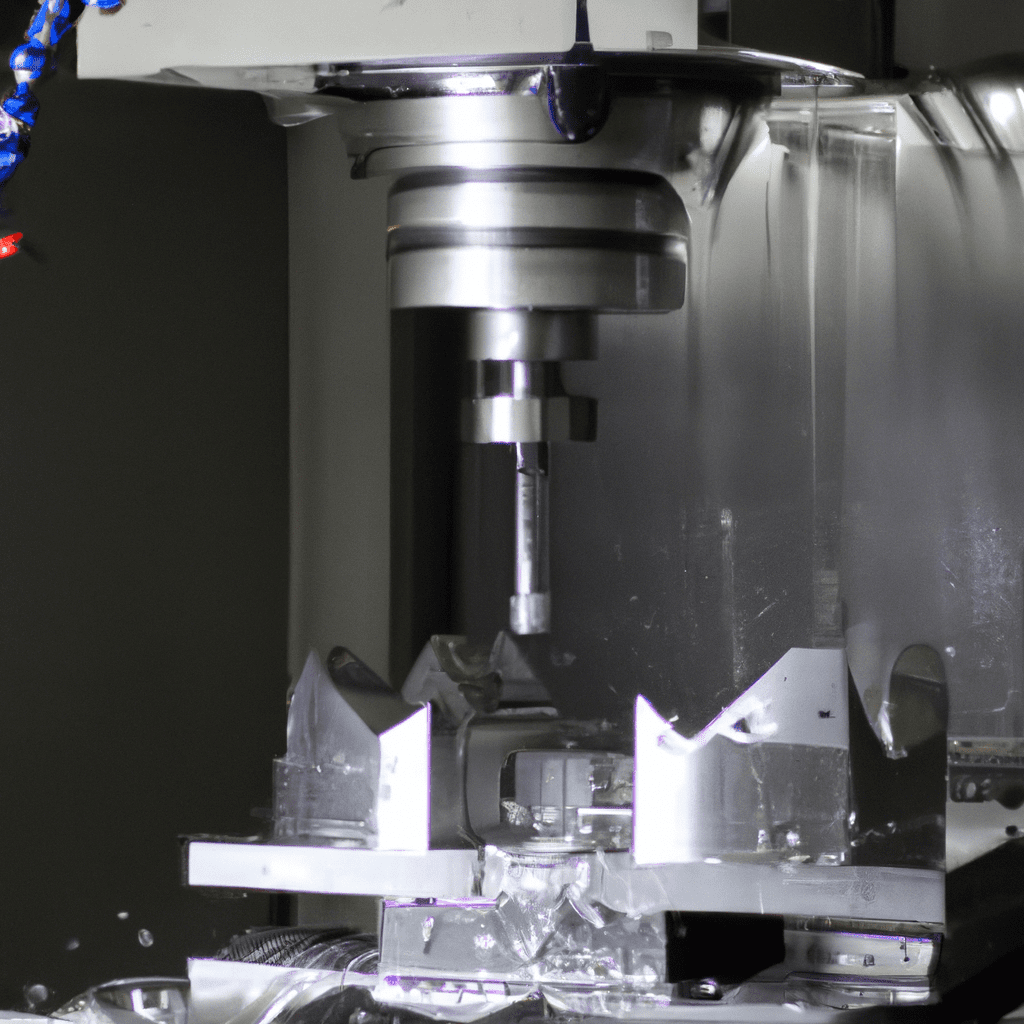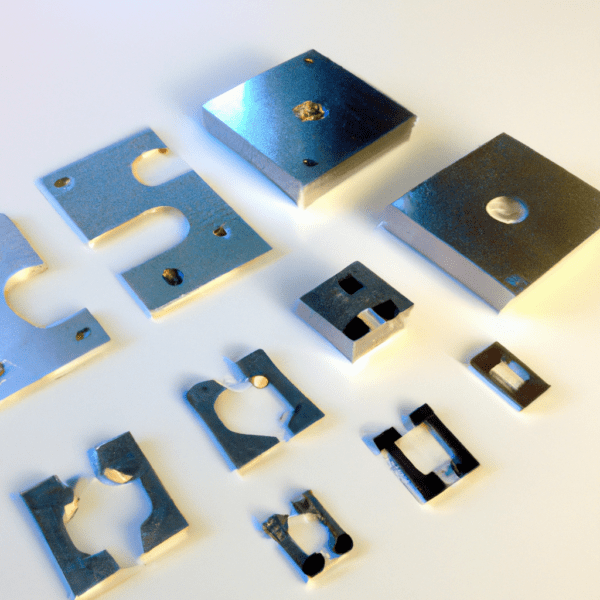What is the CNC Machining Process?
CNC is a subtractive manufacturing process wherein a piece of raw material is progressively carved, drilled, and shaped using various tools to create a finished product. The CNC machine follows instructions from a pre-programmed computer software, which controls the machine’s movements with high precision.
The process can be likened to sculpting from a block of marble. The sculptor begins with a raw, unshaped block and gradually removes material until the desired form emerges. Similarly, CNC machining starts with a raw material block (or billet) and subtracts from it until the final component is achieved.
What are the Main Restrictions of CNC Design?
While CNC machining offers precision and versatility, certain limitations should be kept in mind:
- Tool Accessibility: CNC tools must access the areas they’re machining. As a result, deep cavities or intricate undercuts may be challenging or impossible to machine.
- Tolerances: Even though CNC machines are precise, there are limits to the tolerances achievable. Overly tight tolerances can make the machining process more difficult and expensive.
- Material Constraints: Not all materials are suitable for CNC machining. Some might be too hard or brittle, while others might not provide the desired finish or strength.
- Cost Implications: Complex designs with many pockets, undercuts, or sharp internal corners can increase machining time and thus raise the cost.
CNC Design Guidelines
To harness the potential of CNC machining, designers must keep certain principles in mind:
1. Simplify Your Design:
- Consider the end-use of the part. Over-complicating designs not only increases costs but can also make the part harder to produce.
- Avoid unnecessary features or details that don’t contribute to the part’s function.
2. Mind the Wall Thickness:
- Too thin walls can lead to vibrations during machining, reducing the precision of the part.
- On the flip side, overly thick walls might result in wasted material and increased costs. Find a balance based on your component’s needs.
3. Avoid Sharp Internal Corners:
- CNC tools are cylindrical, meaning they cannot produce perfectly sharp internal corners. Instead, they’ll leave a small radius. By designing with this in mind, you can ensure your part is both manufacturable and functional.
4. Use Standard Tolerances Where Possible:
- Only specify tight tolerances where necessary. Using standard tolerances can significantly reduce the cost and complexity of the machining process.
5. Design for Tool Accessibility:
- Remember, if the tool can’t reach a part of your design, it can’t be machined. Ensure all features are accessible by standard tools. If an intricate feature is essential, consider breaking your design into multiple parts that can be assembled later.
6. Consider Material Selection Early:
- Choose a material that’s both suitable for CNC machining and meets your part’s requirements. Remember, each material behaves differently, so consider factors like strength, finish, and machinability.
7. Plan for Post-Processing:
- CNC machining often requires post-processing steps like deburring, polishing, or painting. Design with these steps in mind to ensure your part is both aesthetically pleasing and functional.

CNC Machine Setups and Parts Orientation
CNC Machine Setups: The setup phase of CNC machining is crucial for ensuring accuracy, efficiency, and maintaining the integrity of the part being machined. A proper machine setup involves the following:
- Workpiece Fixturing: The workpiece needs to be securely and accurately fixed onto the CNC machine. Common fixturing methods include vises, clamps, vacuum tables, and custom jigs.
- Tool Selection and Setting: CNC machines can use a variety of tools, including drills, end mills, and specialized cutters. The right tool must be selected for each operation, and its dimensions must be input into the CNC program.
- Zeroing: Before machining begins, the machine must know the starting point or the ‘zero point’. This is typically the corner or center of the workpiece, and it acts as a reference for all subsequent movements.
Parts Orientation: The orientation of the part in the machine is vital for several reasons:
- Tool Accessibility: To ensure the tool can access all the necessary features of the part.
- Efficiency: Reducing the number of times a part has to be reoriented or remounted in the machine saves time and decreases the chance of errors.
- Surface Finish: Some orientations might provide better surface finishes due to tool paths and cutting angles.
What is 5-Axis CNC Machining?
Traditional CNC machines operate on three axes: X, Y, and Z. However, 5-axis CNC machining introduces two additional rotational axes, often denoted as A and B, which rotate around the X and Y axes, respectively.
The addition of these axes allows for:
- Complex Geometries: Parts with intricate designs can be machined in a single setup.
- Shorter Lead Times: Fewer setups mean faster production times.
- Higher Precision: By reducing the number of setups, the part undergoes less handling, leading to fewer chances for errors.
- Better Surface Finishes: The machine can approach the workpiece from all angles, allowing for more consistent finishes.
CNC Machining Undercuts
Undercuts are features that are recessed and not directly accessible along the main axes of the CNC machine. They present unique challenges because standard tools, moving in typical X, Y, or Z directions, cannot reach them.
To machine undercuts:
- Specialized Tools: Lollipop cutters or T-slot cutters can be used to create certain undercut profiles.
- 5-Axis Machines: As mentioned earlier, 5-axis CNC machines can rotate the part or tool to access areas that 3-axis machines cannot.
- Multiple Setups: In some cases, the workpiece can be reoriented to allow standard tools to access the undercut region.
It’s important to note that undercuts can add complexity, cost, and time to the machining process. Whenever possible, designers are encouraged to avoid or minimize undercuts. If they are essential for the design, early consultation with a machinist can provide insights into the best methods for production.

Drafting a Technical Drawing
Technical drawings are fundamental to the manufacturing process, acting as a blueprint for manufacturers to understand the design’s dimensions, tolerances, and specifications. These drawings serve as a universal language between designers, engineers, and manufacturers, ensuring that a part is made accurately to its intended design.
Key Aspects of a Technical Drawing:
- Views: Typically, a technical drawing will include multiple views of a component – front, side, top, and sometimes, sectional views. Each view offers a unique perspective, ensuring that every aspect of the part is well-understood.
- Dimensions: Every relevant dimension should be clearly stated. This includes lengths, diameters, radii, and any other necessary measurements.
- Tolerances: Precision is paramount in manufacturing. Tolerances tell the manufacturer the allowable deviation for each dimension. They play a crucial role in ensuring parts fit and function correctly.
- Material Specifications: The drawing should clearly state the desired material for the component. It might also specify material finishes or post-processing treatments.
- Annotations: Any additional information or clarifications can be added as notes or annotations on the drawing.
- Symbols: Technical drawings use standardized symbols to represent features like threads, surface finishes, or welding points.
Hubs’ Best Practices for CNC Machining
Hubs is an online platform that connects engineers and product designers with manufacturing facilities around the globe. They have established several best practices for CNC machining to ensure parts are manufactured to high standards and meet clients’ requirements.
Some of Hubs’ best practices include:
- Material Selection: Hubs often emphasizes the importance of selecting the right material based on the part’s end-use, machinability, and desired finish. Their platform provides insights and recommendations to guide users in material selection.
- Design Feedback: One of Hubs’ standout features is the automatic design feedback. When you upload your design, their system will analyze it and provide instant feedback, pointing out potential manufacturability issues and suggesting improvements.
- Optimizing for Tooling: Hubs advises designers to consider standard tool sizes and geometries during the design phase. This ensures that the features can be machined using standard tools, reducing costs and lead times.
- Feature Depth Considerations: For CNC machining, deep pockets or cavities can be challenging. Hubs recommends keeping the depth of such features no more than four times the tool’s diameter.
- Wall Thickness Recommendations: To avoid issues like vibrations during machining, Hubs suggests maintaining a minimum wall thickness based on the material being used. This ensures stability during the machining process.
- Tolerance Guidelines: While Hubs’ system can handle a range of tolerances, they advise designers to use standard tolerances wherever possible. This approach is more cost-effective and can speed up the production process.
- Post-Processing: Hubs offers a variety of post-processing options, from anodizing to powder coating. They emphasize considering post-processing early in the design phase to ensure the final part meets both functional and aesthetic requirements.
By adhering to these practices and leveraging Hubs’ platform’s capabilities, designers and engineers can optimize their designs for CNC machining. The synergy between thoughtful design and the insights provided by platforms like Hubs can pave the way for efficient, high-quality, and cost-effective manufacturing.
